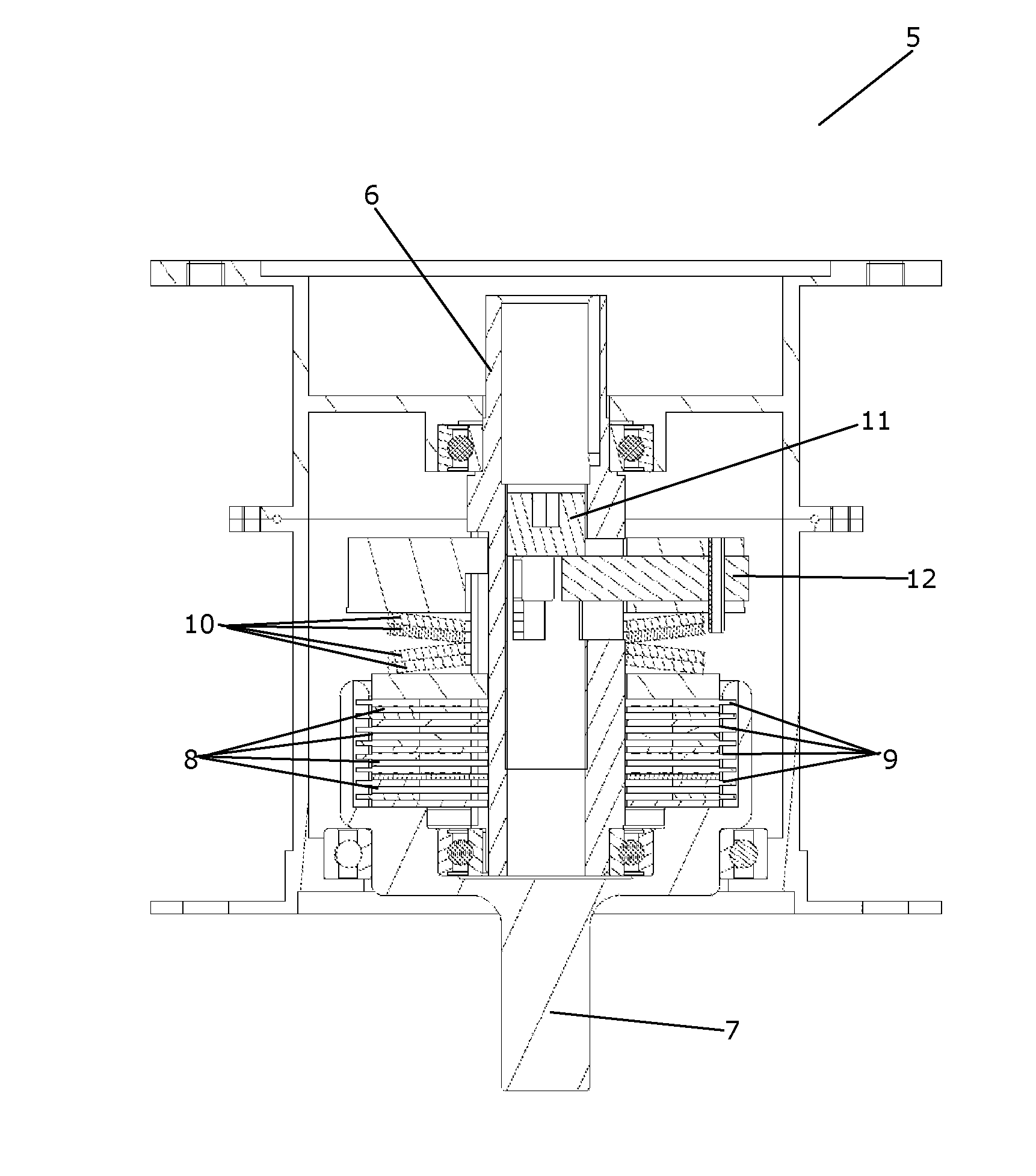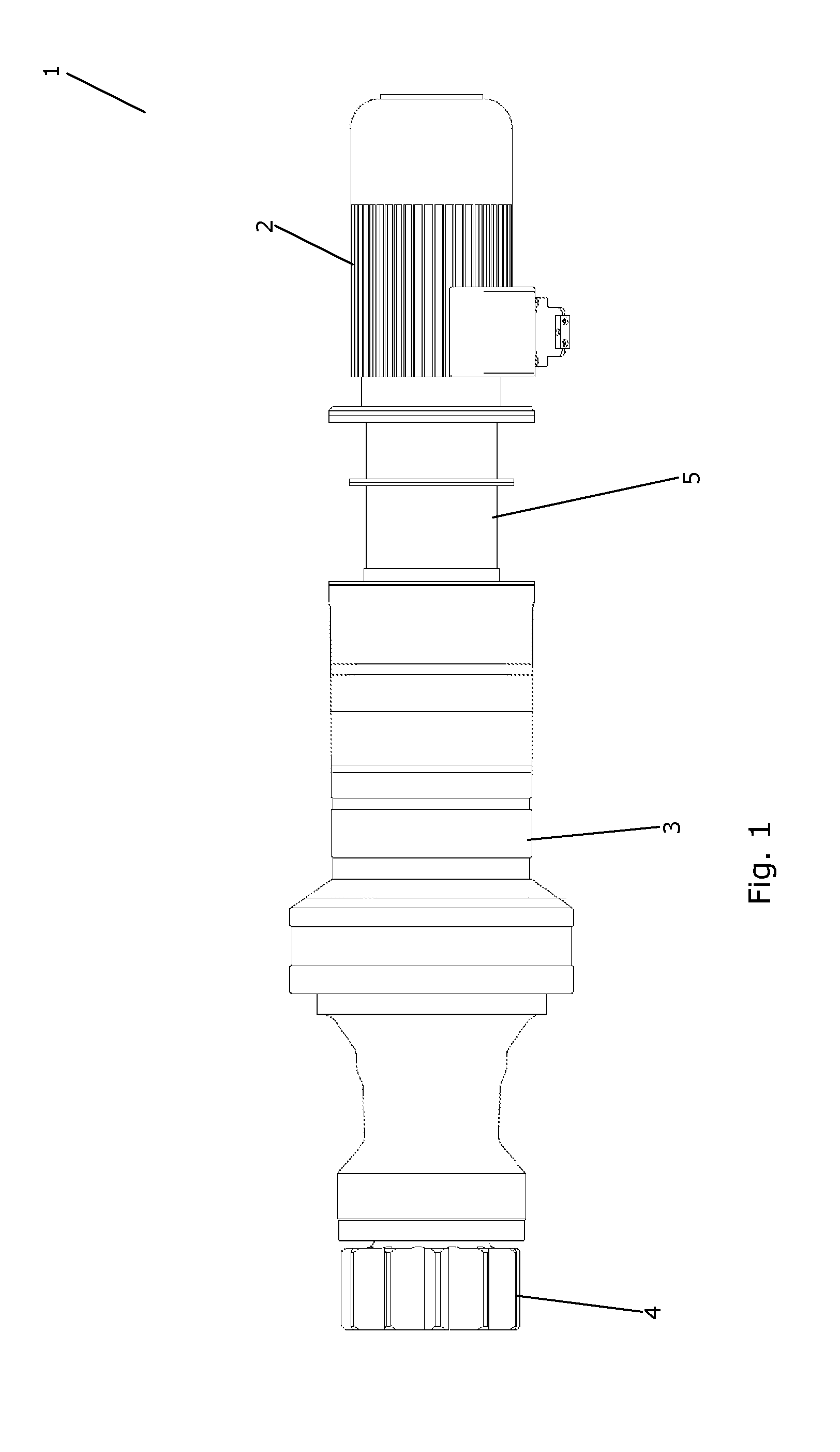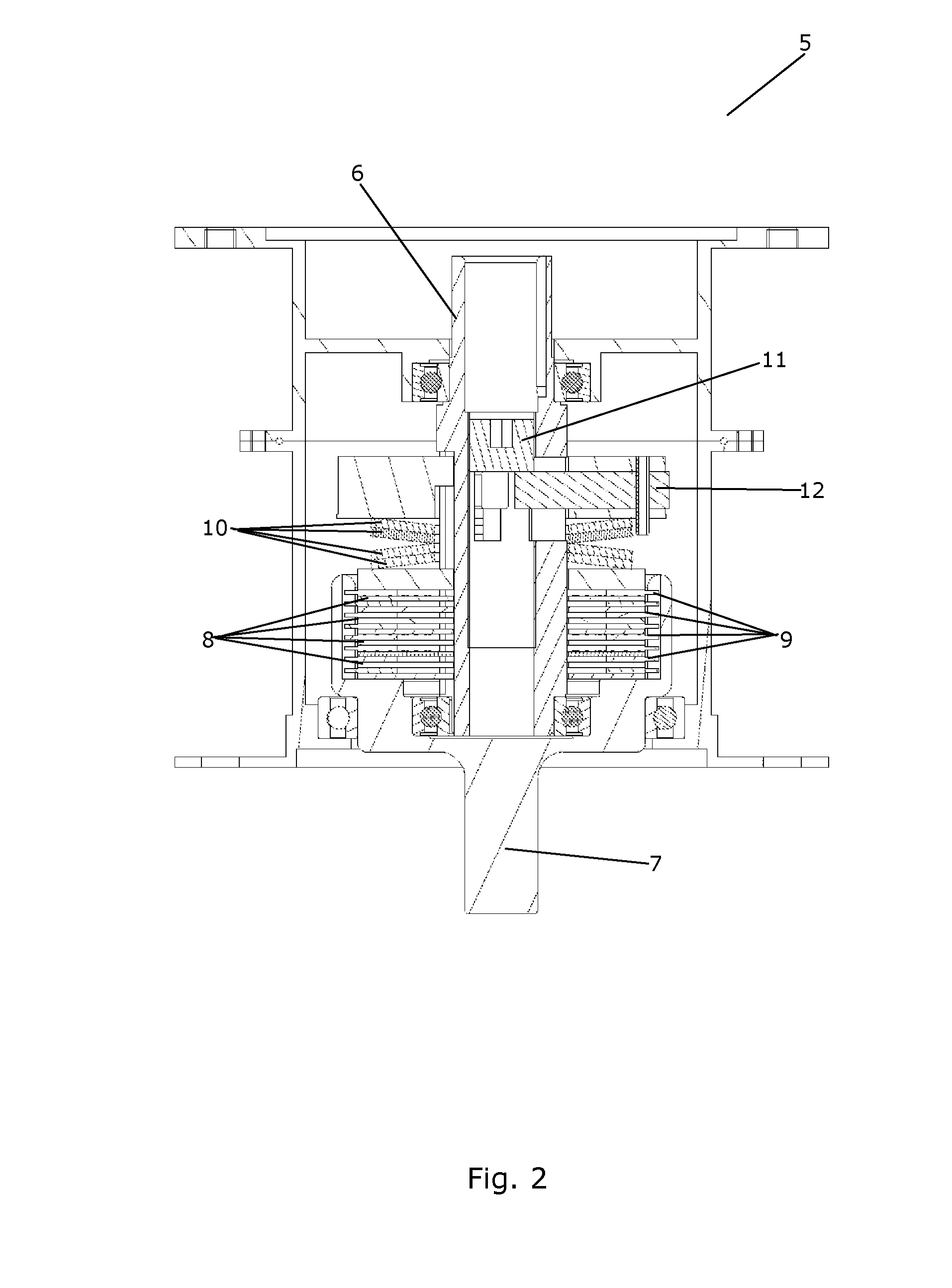Yaw drive for a yawing system for a wind turbine
- Summary
- Abstract
- Description
- Claims
- Application Information
AI Technical Summary
Benefits of technology
Problems solved by technology
Method used
Image
Examples
first embodiment
[0033]FIG. 2 is a cross sectional view of a torque limiter for a yaw drive according to the invention,
second embodiment
[0034]FIG. 3 is a cross sectional view of a torque limiter for a yaw drive according to the invention,
[0035]FIGS. 4 and 5 illustrate a slotted disc spring for use in a torque limiter for a yaw drive according to an embodiment of the invention, and
[0036]FIG. 6 is a graph illustrating the spring characteristic for the slotted disc spring of FIGS. 4 and 5.
PUM
 Login to View More
Login to View More Abstract
Description
Claims
Application Information
 Login to View More
Login to View More - R&D
- Intellectual Property
- Life Sciences
- Materials
- Tech Scout
- Unparalleled Data Quality
- Higher Quality Content
- 60% Fewer Hallucinations
Browse by: Latest US Patents, China's latest patents, Technical Efficacy Thesaurus, Application Domain, Technology Topic, Popular Technical Reports.
© 2025 PatSnap. All rights reserved.Legal|Privacy policy|Modern Slavery Act Transparency Statement|Sitemap|About US| Contact US: help@patsnap.com



